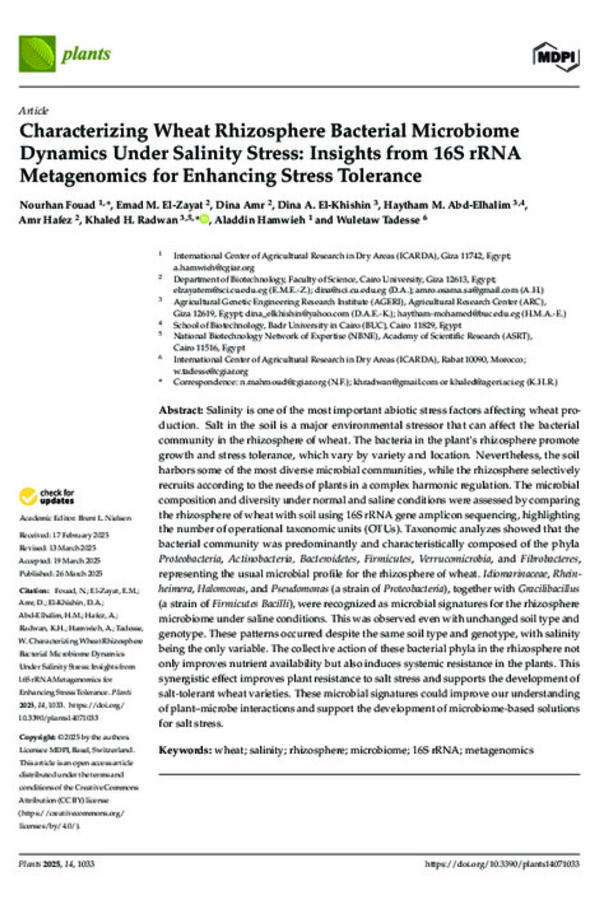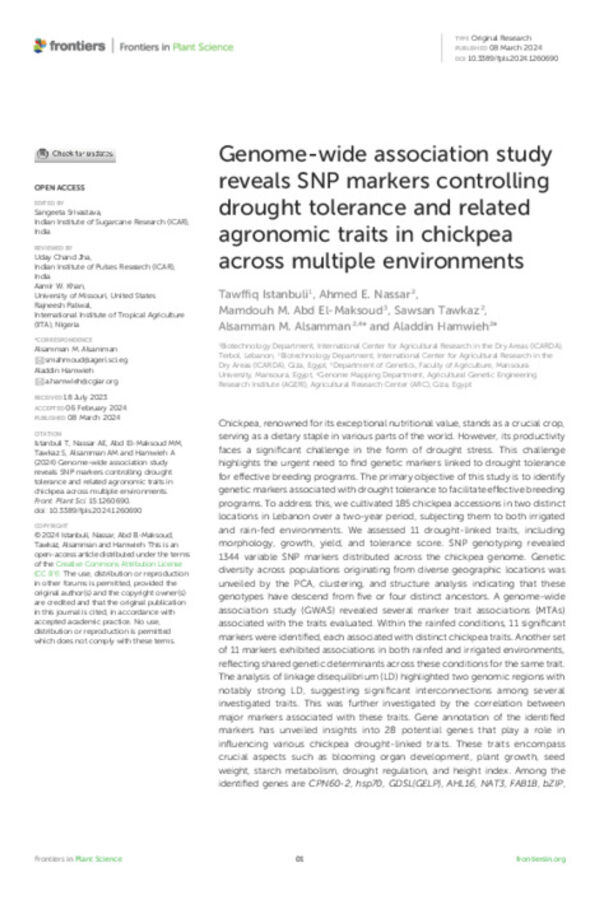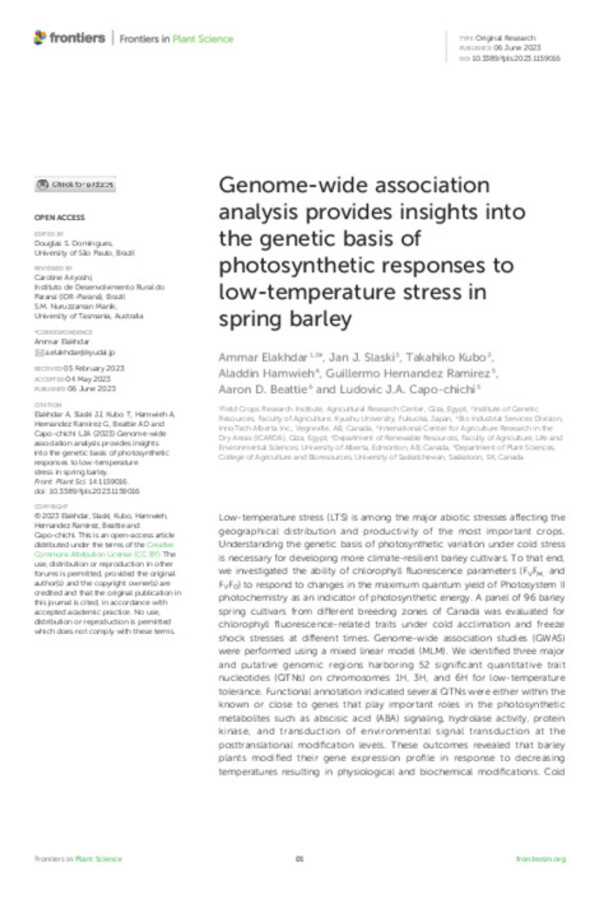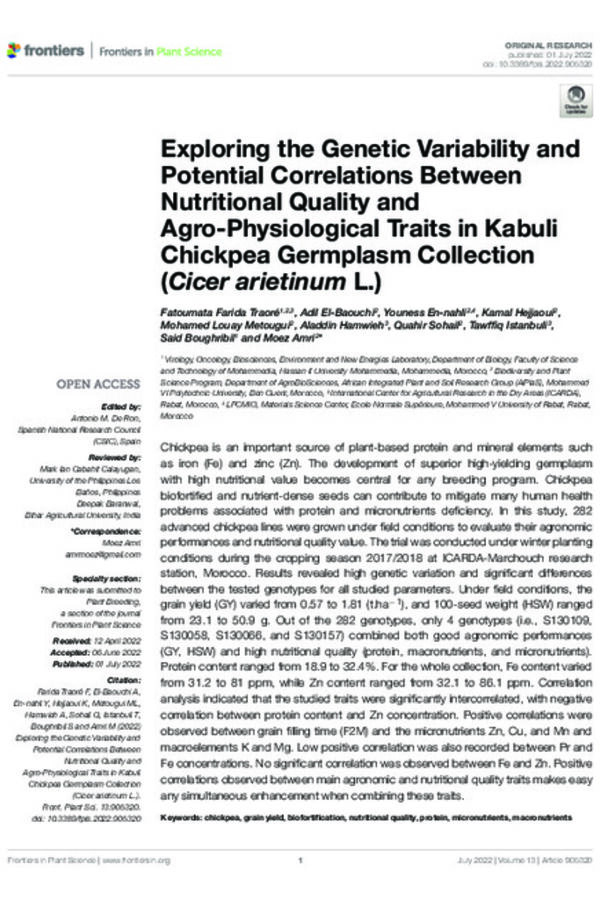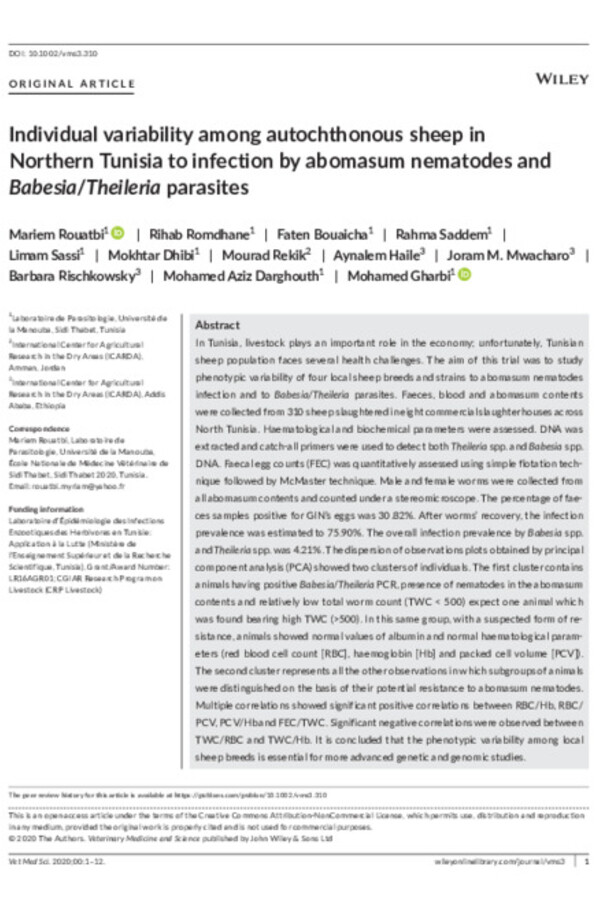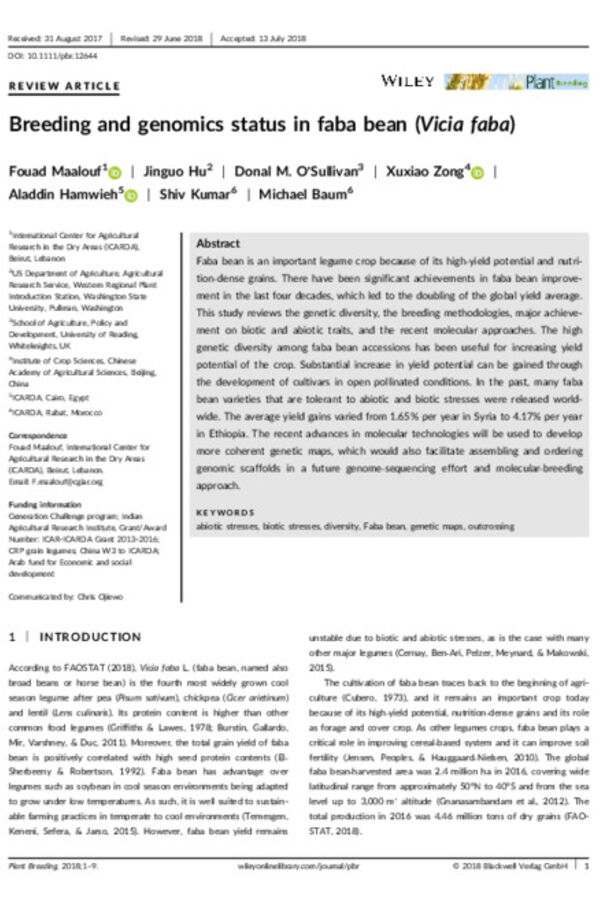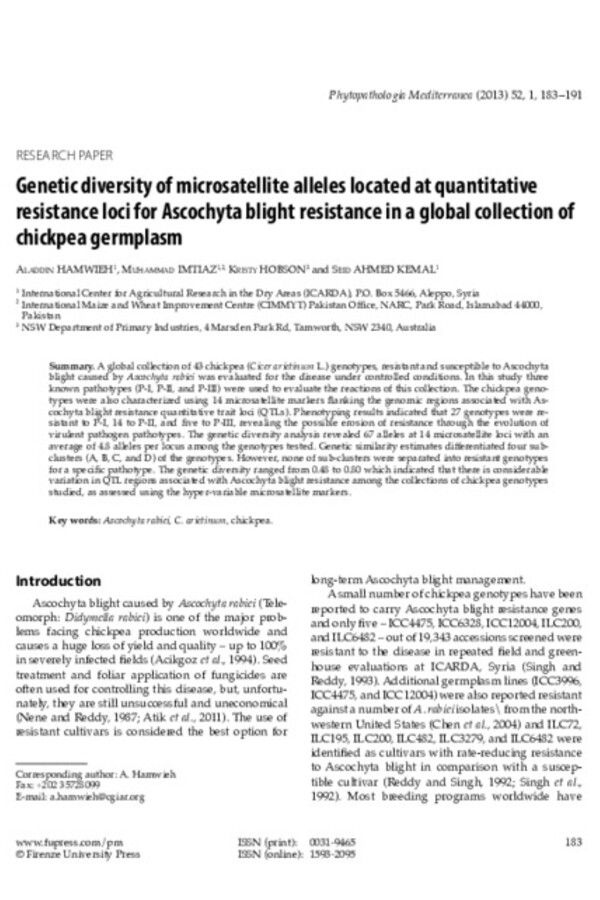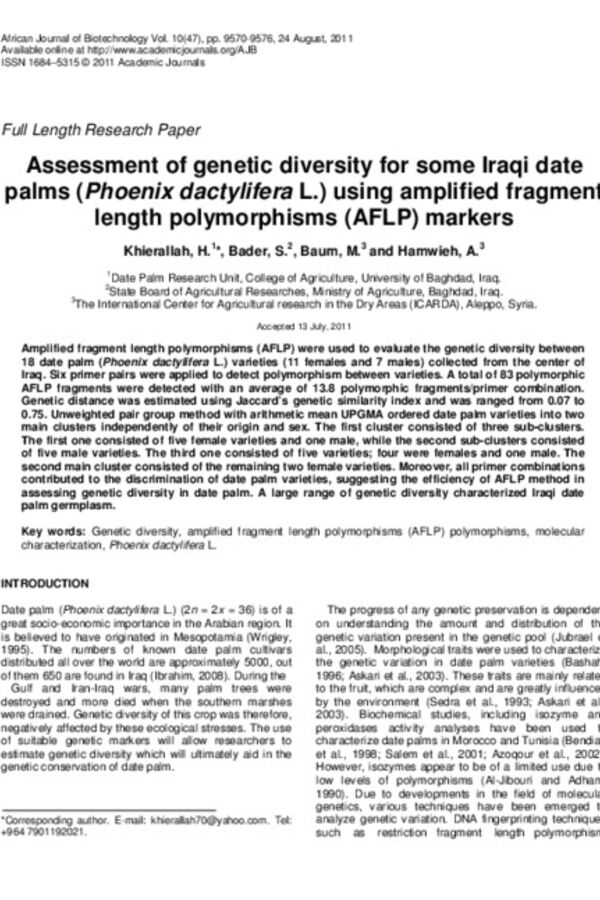- Home
- About Us
- Our Research Experts
- Aladdin Hamwieh

Aladdin Hamwieh
Senior Scientist Breeder, Biotechnologist/Country Coordinator – Egypt
Aladdin Hamwieh's Publications
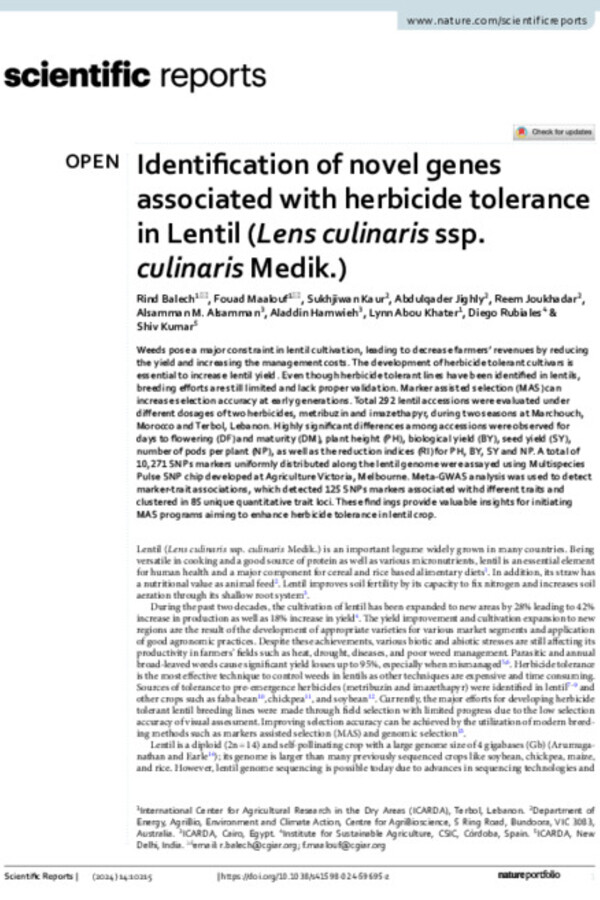
Identification of novel genes associated with herbicide tolerance in Lentil (Lens culinaris ssp. culinaris Medik.)
May 03, 2024
Journal Article

Engineering Abiotic Stresses in Crops by Using Biotechnological Approaches
April 01, 2024
Book Chapter
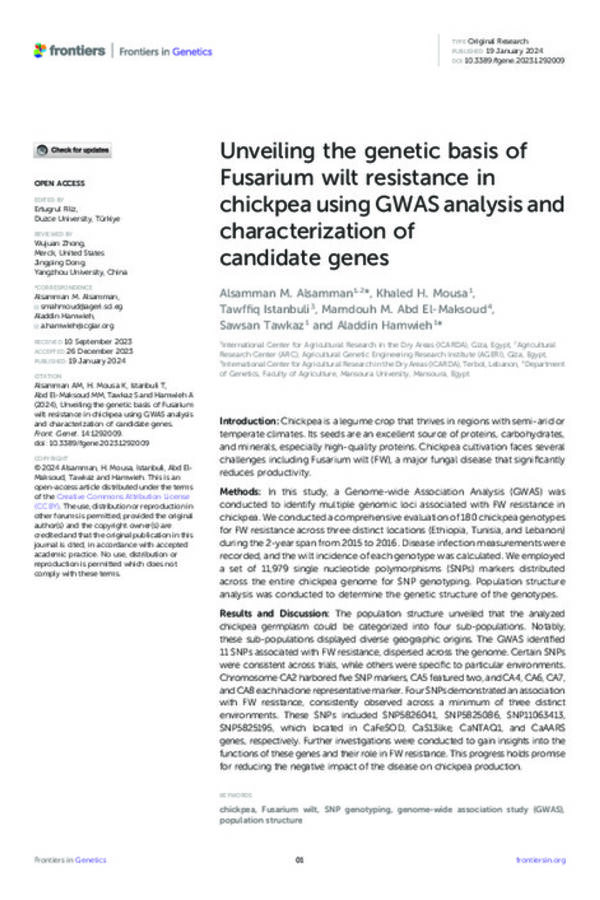
Unveiling the genetic basis of Fusarium wilt resistance in chickpea using GWAS analysis and characterization of candidate genes
January 18, 2024
Journal Article
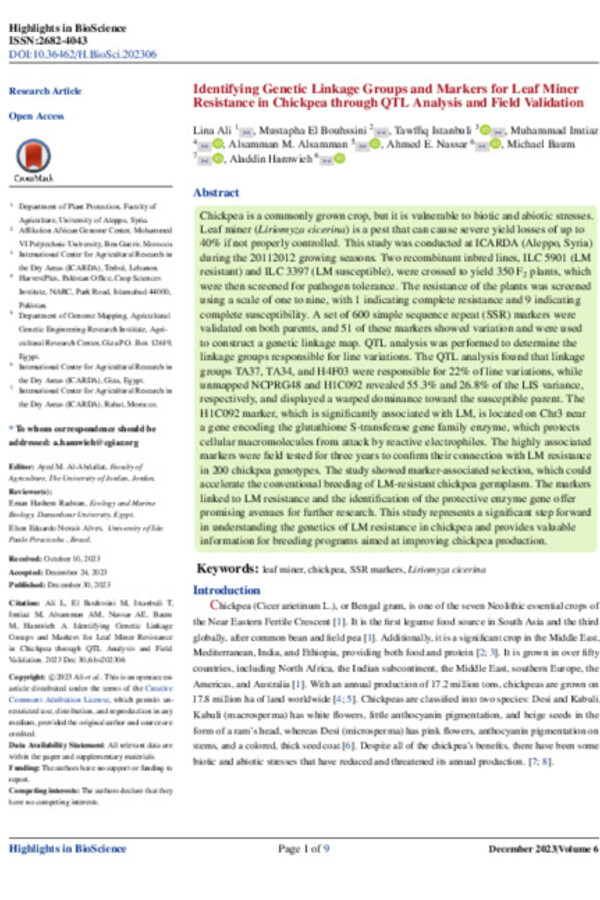
Identifying Genetic Linkage Groups and Markers for Leaf Miner Resistance in Chickpea through QTL Analysis and Field Validation
December 30, 2023
Journal Article
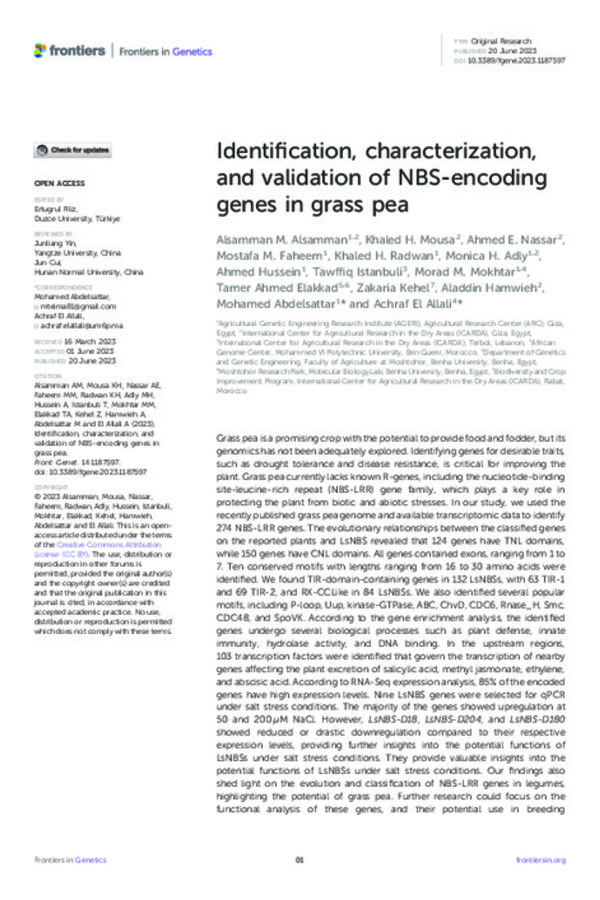
Identification, characterization, and validation of NBS-encoding genes in grass pea
June 20, 2023
Journal Article
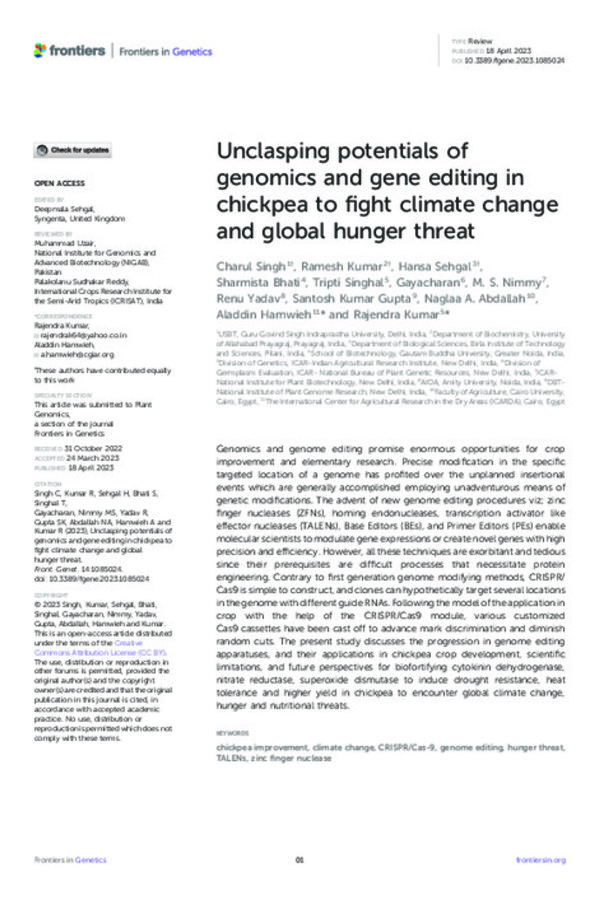
Unclasping potentials of genomics and gene editing in chickpea to fight climate change and global hunger threat
April 18, 2023
Journal Article
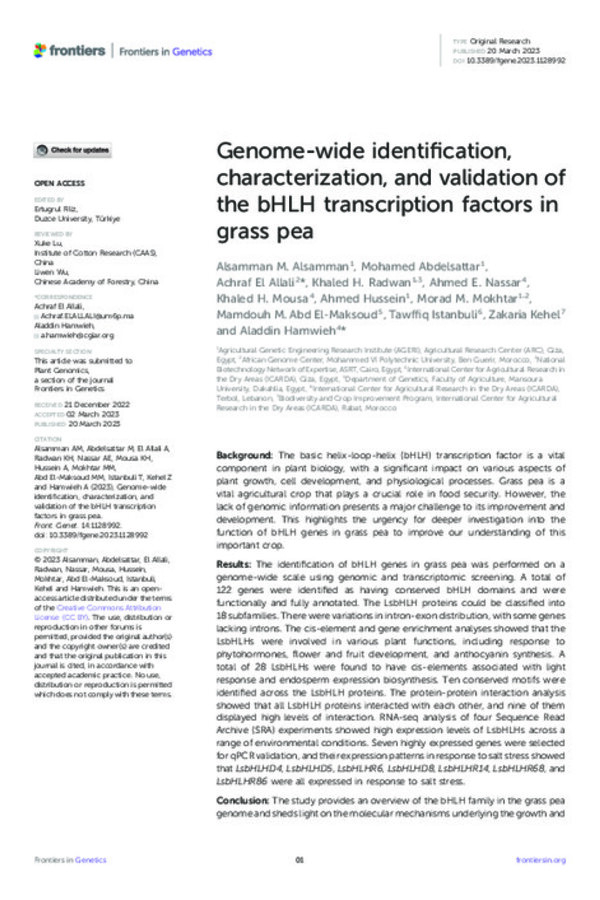
Genome-wide identification, characterization, and validation of the bHLH transcription factors in grass pea
March 20, 2023
Journal Article
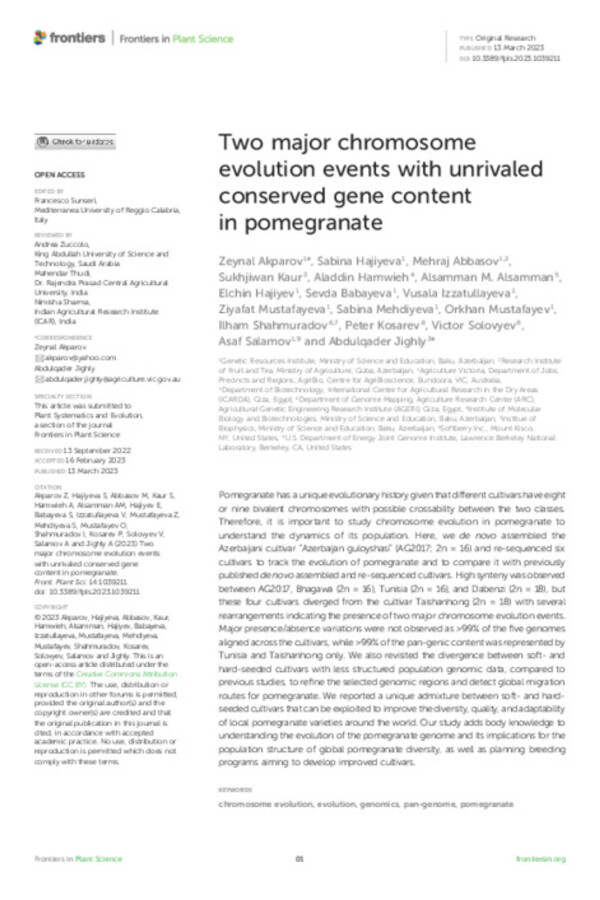
Two major chromosome evolution events with unrivaled conserved gene content in pomegranate
March 13, 2023
Journal Article

Innovations in Agronomic Management for Adaptation to Climate Change in Legume Cultivation
January 01, 2023
Book Chapter
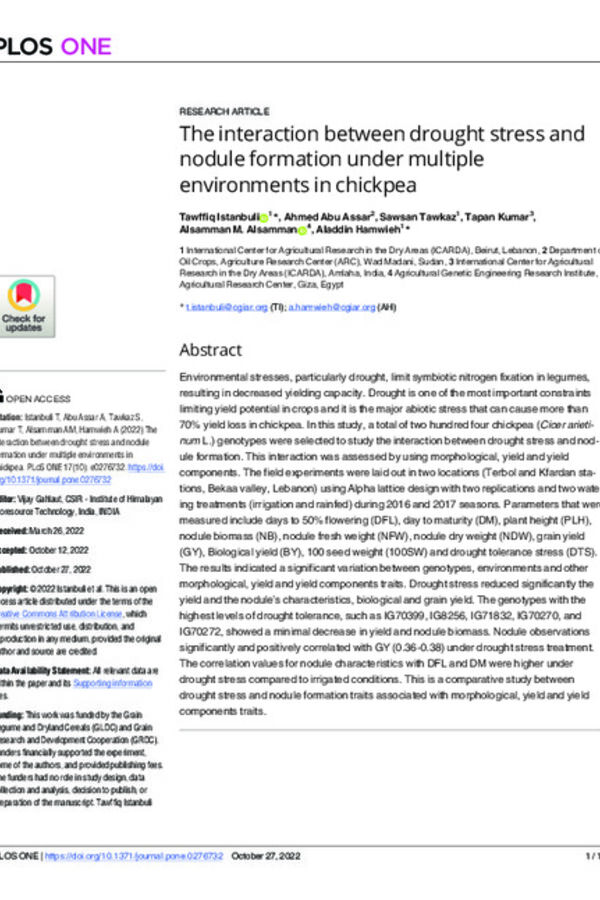
The interaction between drought stress and nodule formation under multiple environments in chickpea
October 27, 2022
Journal Article
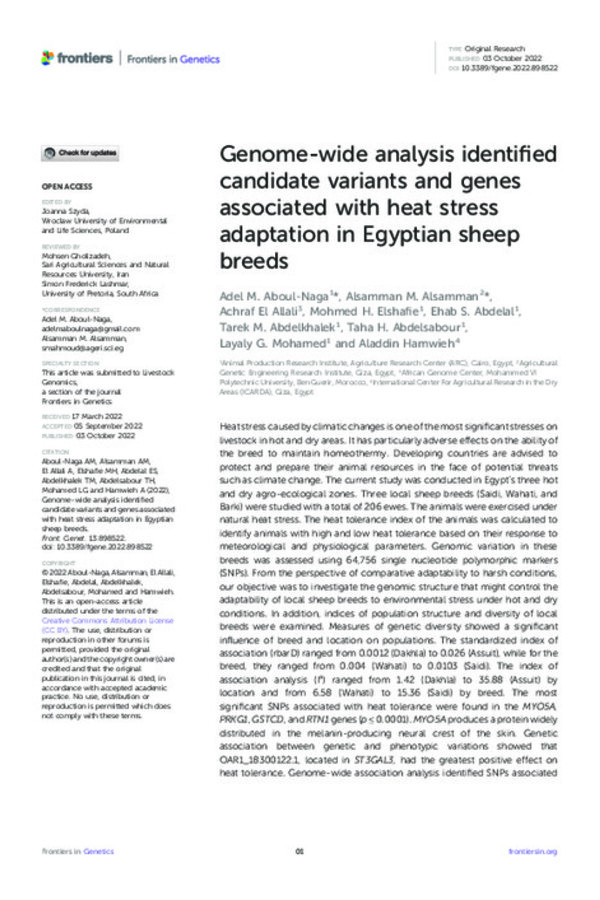
Genome-wide analysis identified candidate variants and genes associated with heat stress adaptation in Egyptian sheep breeds
October 03, 2022
Journal Article
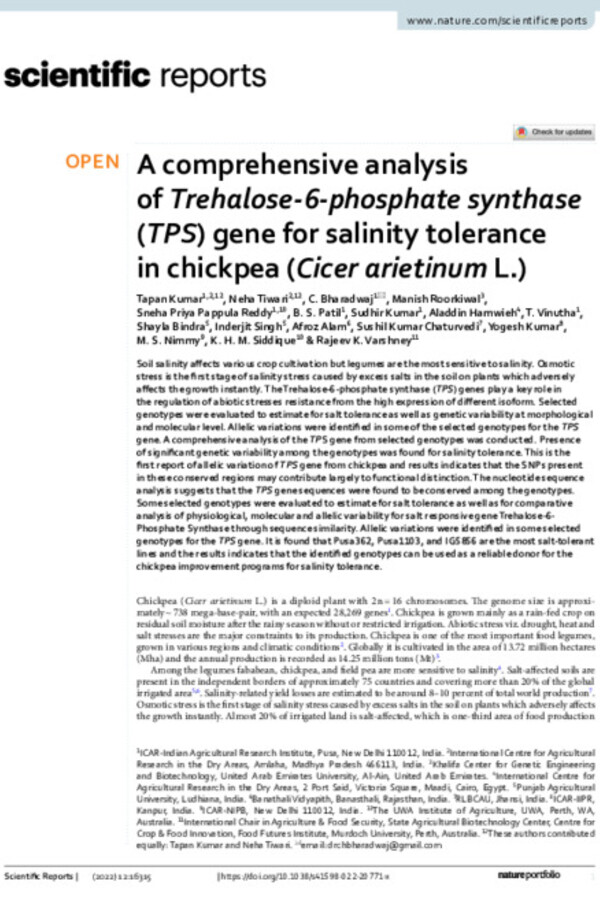
A comprehensive analysis of Trehalose-6-phosphate synthase (TPS) gene for salinity tolerance in chickpea (Cicer arietinum L.)
September 29, 2022
Journal Article

Barley with improved drought tolerance: Challenges and perspectives
September 01, 2022
Journal Article
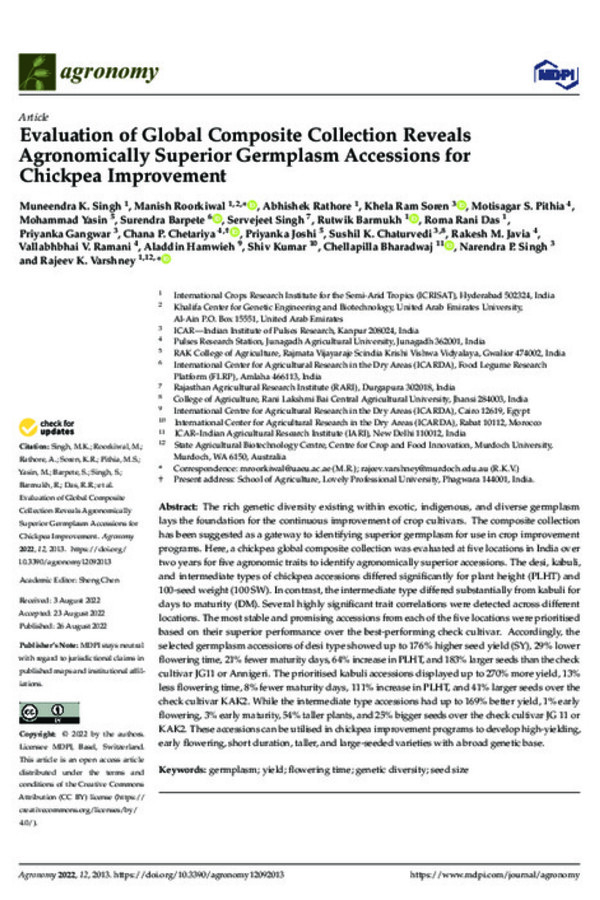
Evaluation of Global Composite Collection Reveals Agronomically Superior Germplasm Accessions for Chickpea Improvement
August 26, 2022
Journal Article
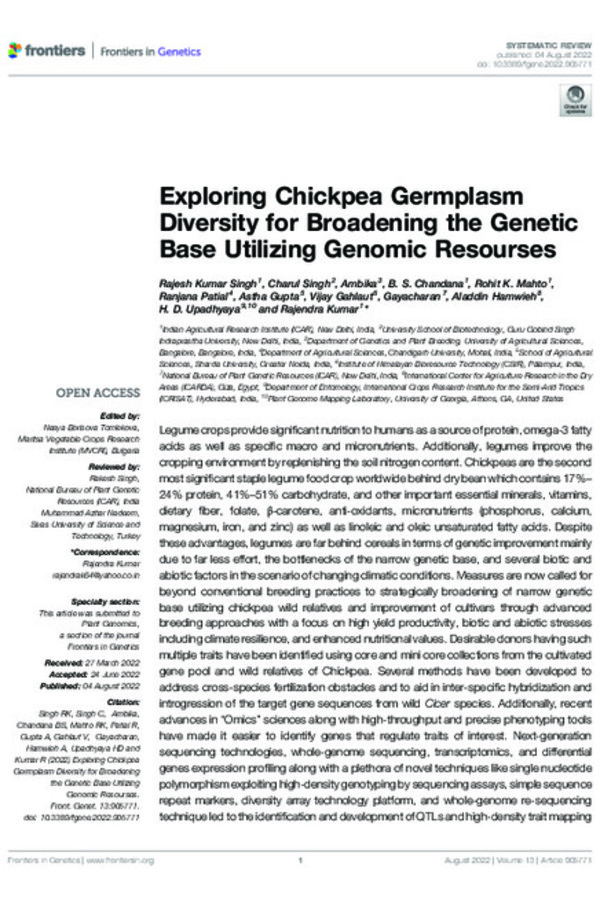
Exploring Chickpea Germplasm Diversity for Broadening the Genetic Base Utilizing Genomic Resourses
August 04, 2022
Journal Article
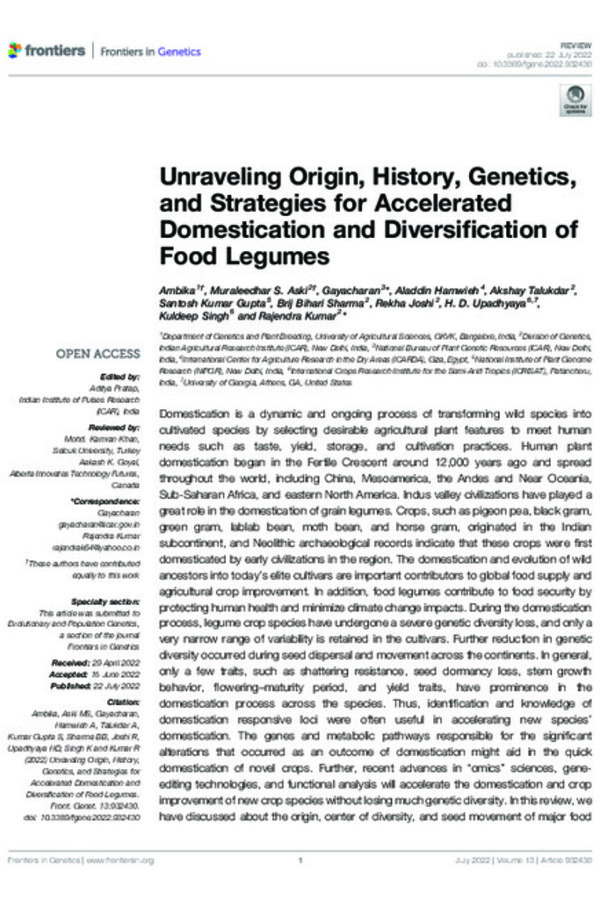
Unraveling Origin, History, Genetics, and Strategies for Accelerated Domestication and Diversification of Food Legumes
July 22, 2022
Journal Article
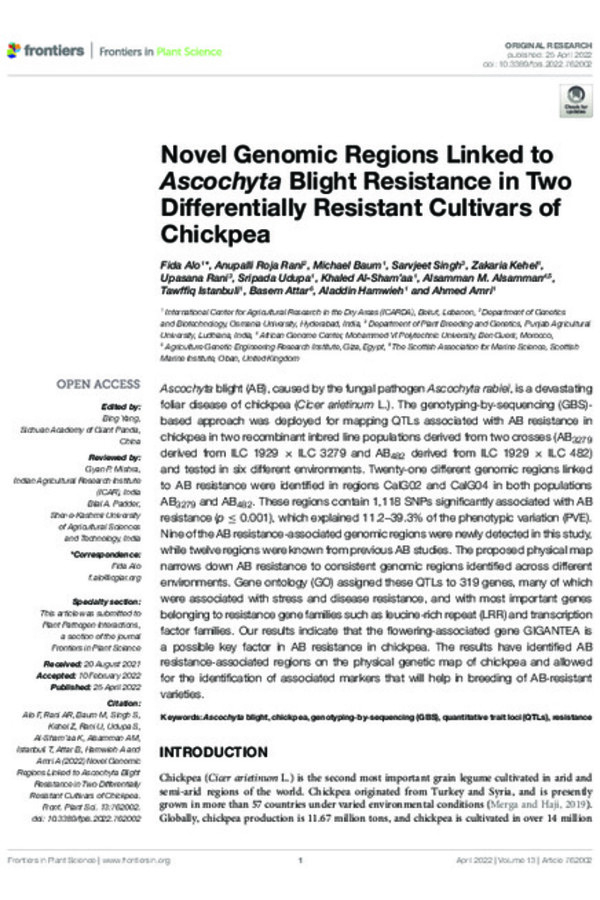
Novel Genomic Regions Linked to Ascochyta Blight Resistance in Two Differentially Resistant Cultivars of Chickpea
April 25, 2022
Journal Article
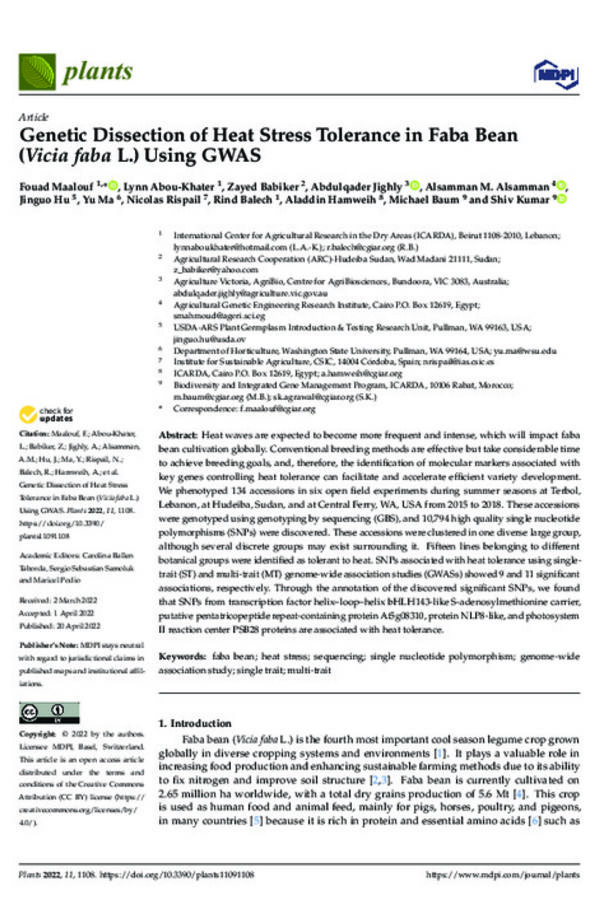
Genetic Dissection of Heat Stress Tolerance in Faba Bean (Vicia faba L.) Using GWAS
April 20, 2022
Journal Article

Towards the Development, Maintenance and Standardized Phenotypic Characterization of Single-Seed-Descent Genetic Resources for Chickpea
February 18, 2022
Journal Article
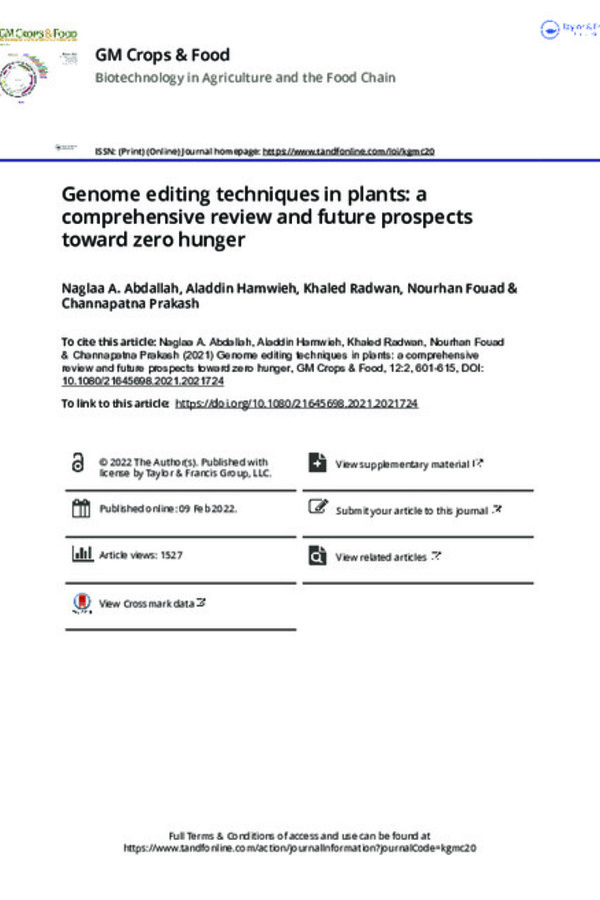
Genome editing techniques in plants: a comprehensive review and future prospects toward zero hunger
February 09, 2022
Journal Article
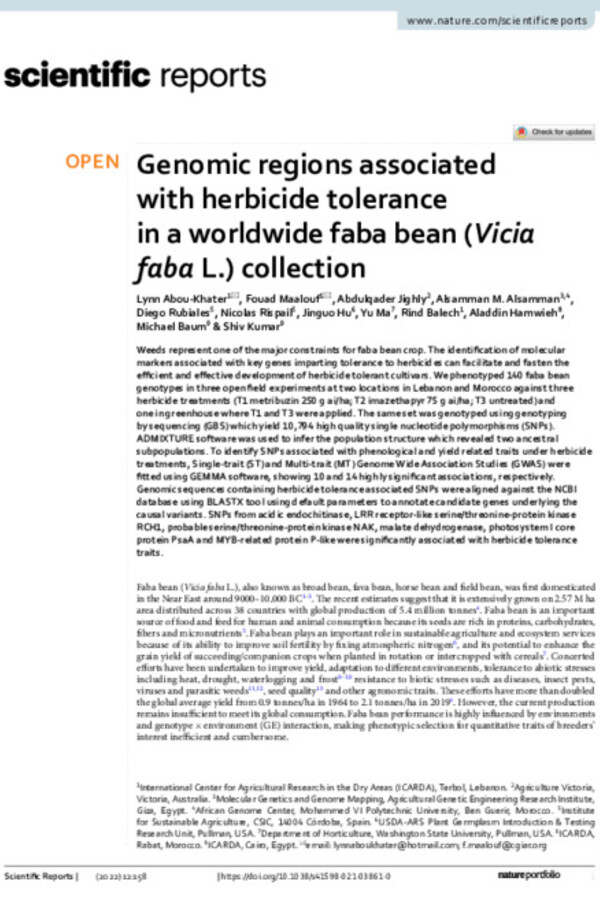
Genomic regions associated with herbicide tolerance in a worldwide faba bean (Vicia faba L.) collection
January 07, 2022
Journal Article

Pathogen diversity and mating types of Didymella rabiei isolates collected from Morocco
January 01, 2022
Journal Article
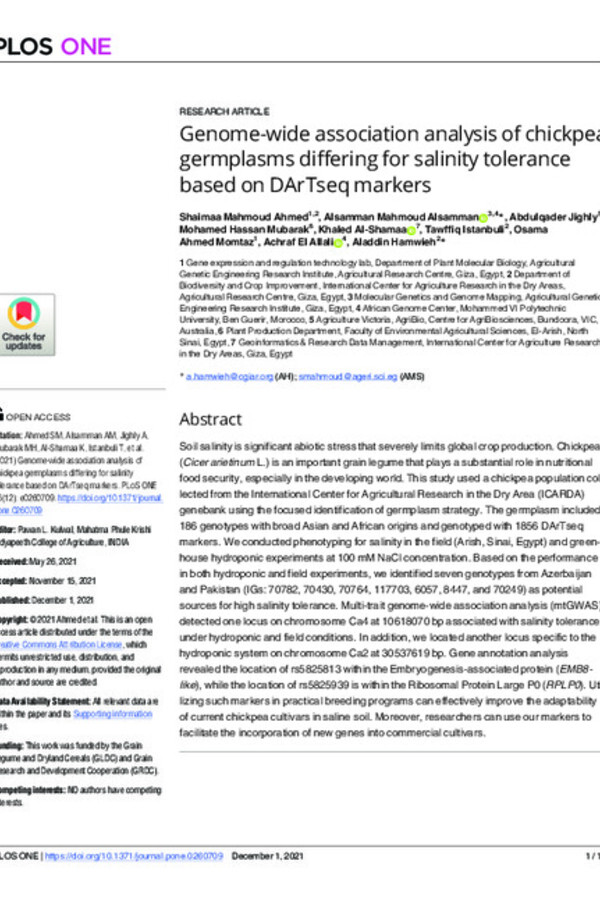
Genome-wide association analysis of chickpea germplasms differing for salinity tolerance based on DArTseq markers
December 01, 2021
Journal Article

Phenotypic assessment of bread wheat genotypes under salt stress using multivariate analysis
November 16, 2021
Journal Article

Evaluation Of Elite Bread Wheat Genotypes And Egyptian cultivars for salinity tolerance under saline conditions in Egypt
November 16, 2021
Journal Article
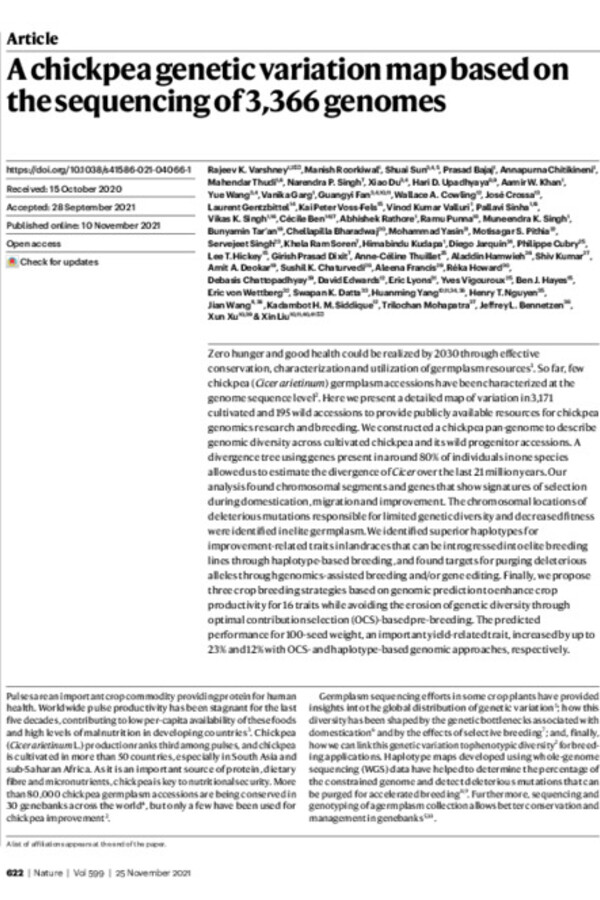
A chickpea genetic variation map based on the sequencing of 3,366 genomes
November 10, 2021
Journal Article

Developing a new genic SSR primer database in faba bean (Vicia faba L.)
March 23, 2021
Journal Article
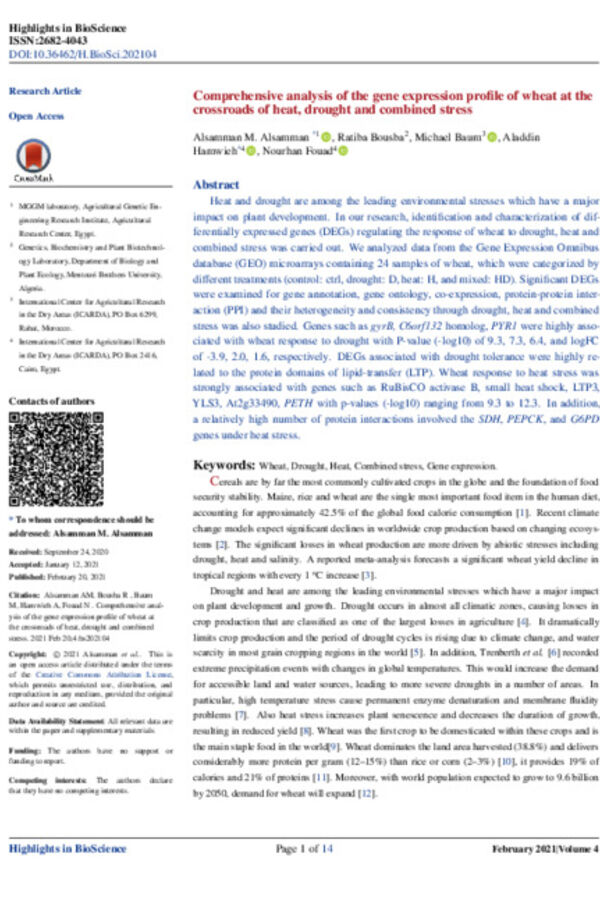
Comprehensive analysis of the gene expression profile of wheat at the crossroads of heat, drought and combined stress
February 20, 2021
Journal Article

Functional description and development of polymorphic EST-SSR markers in bread wheat and their gene interactions network
December 01, 2020
Journal Article
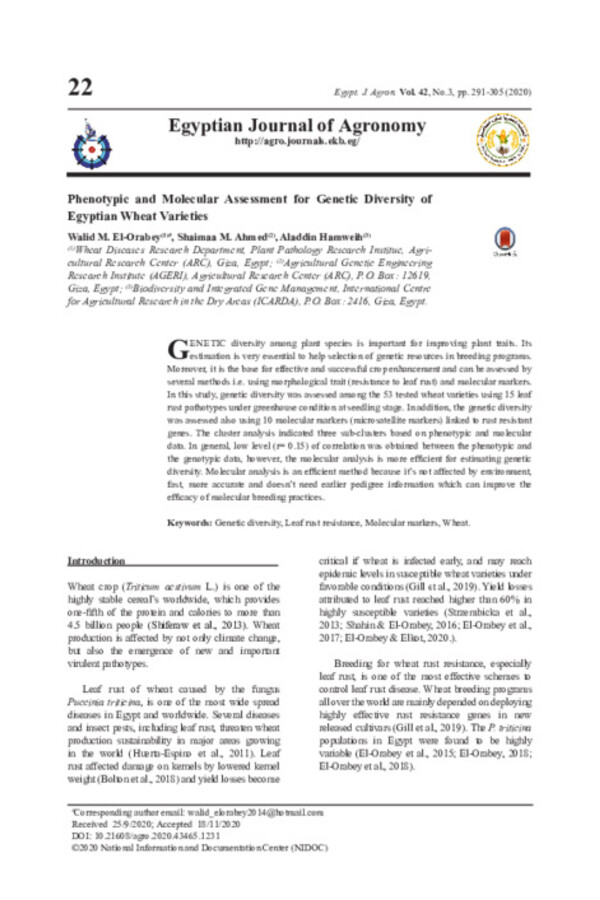
Phenotypic and Molecular Assessment for Genetic Diversity of Egyptian Wheat Varieties
October 01, 2020
Journal Article
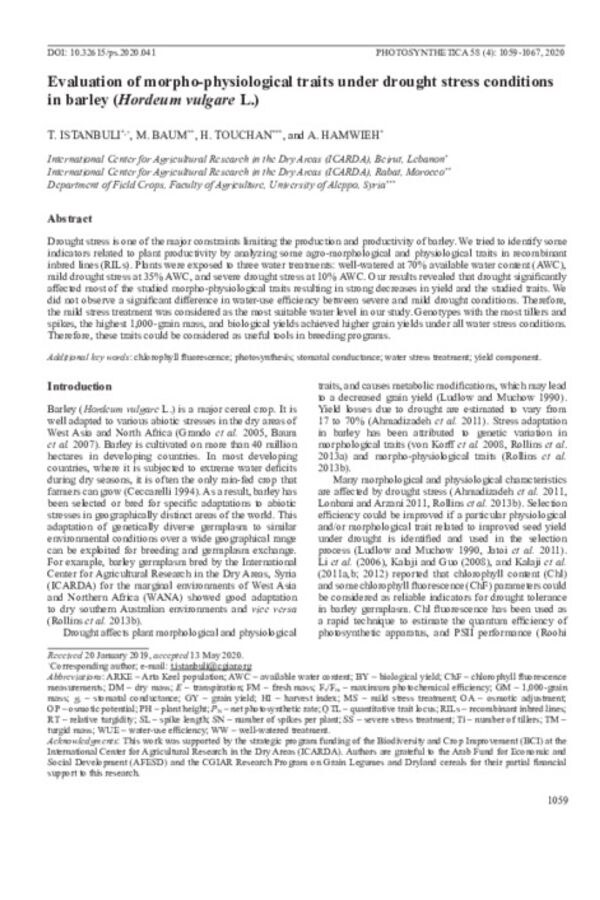
Evaluation of morpho-physiological traits under drought stress conditions in barley (Hordeum vulgare L.)
September 04, 2020
Journal Article
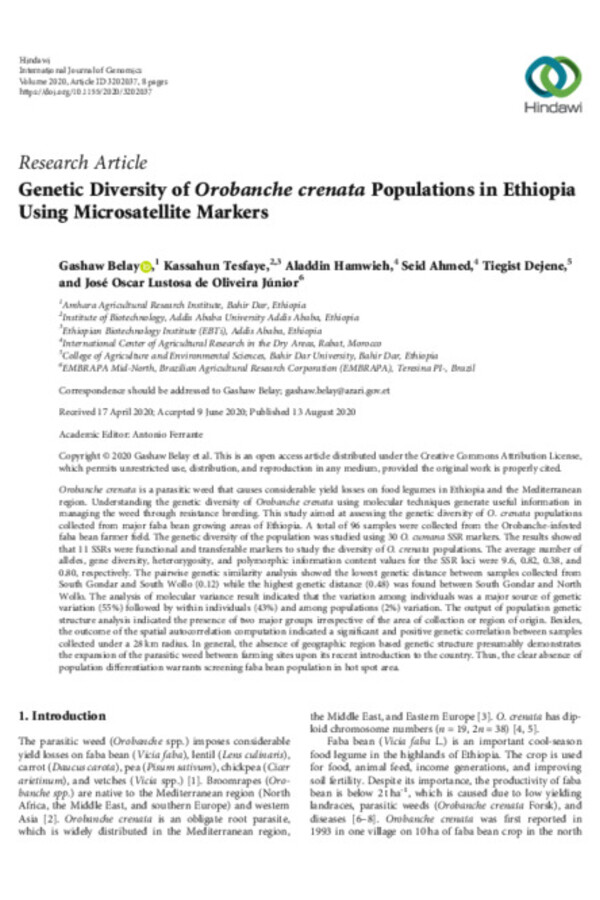
Genetic Diversity of Orobanche crenata Populations in Ethiopia Using Microsatellite Markers
August 13, 2020
Journal Article
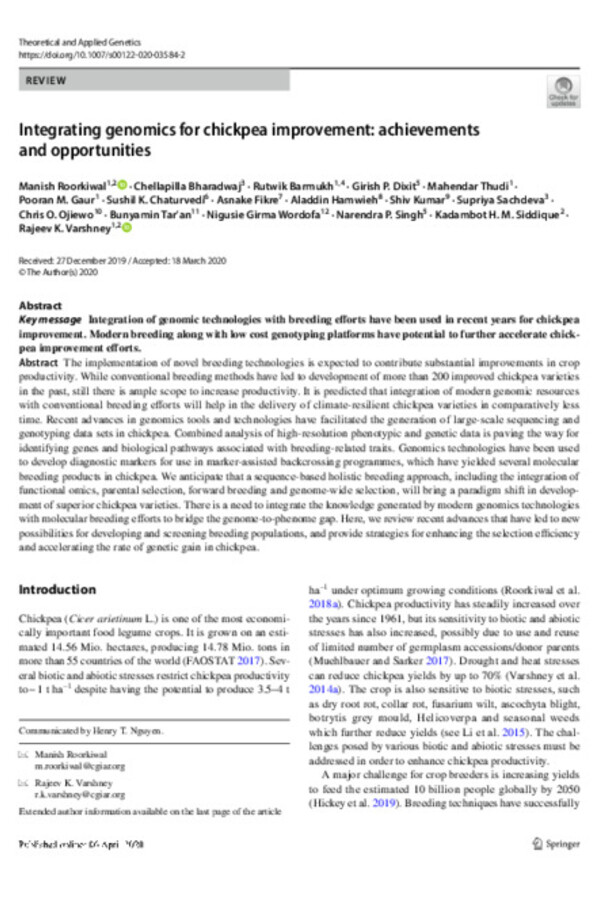
Integrating genomics for chickpea improvement: achievements and opportunities
April 06, 2020
Journal Article
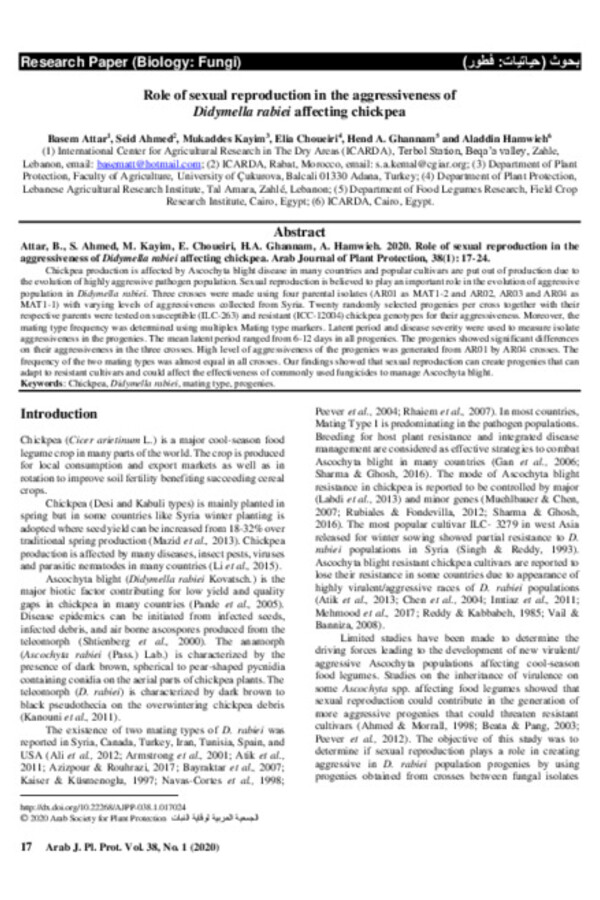
Role of sexual reproduction in the aggressiveness of Didymella rabiei affecting chickpea
March 25, 2020
Journal Article

Genetic diversity of Fusarium oxysporum f. sp. ciceris isolates affecting chickpea in Syria
June 28, 2019
Journal Article
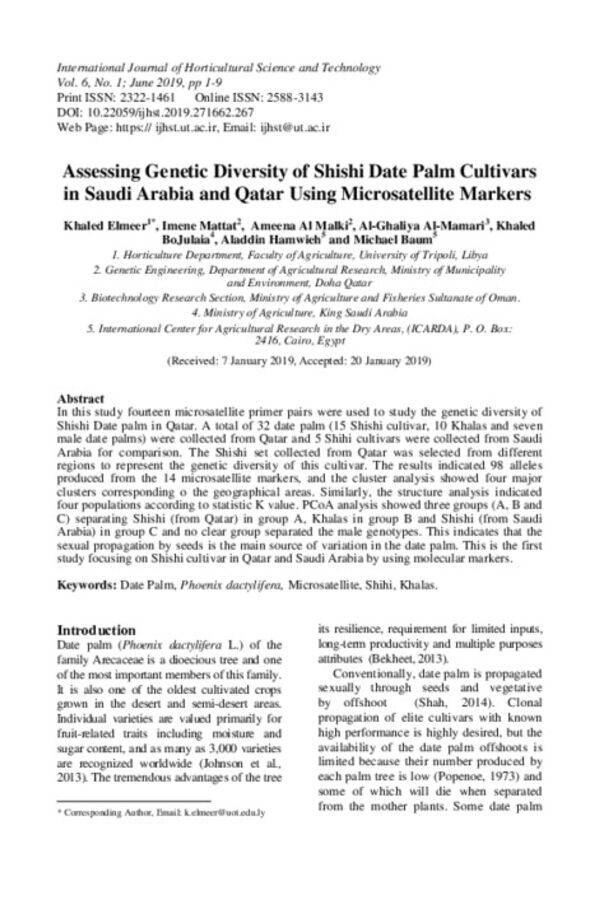
Assessing Genetic Diversity of Shishi Date Palm Cultivars in Saudi Arabia and Qatar Using Microsatellite Markers
June 01, 2019
Journal Article

Distribution and factors influencing chickpea wilt and root rot epidemics in Ethiopia
April 30, 2018
Journal Article
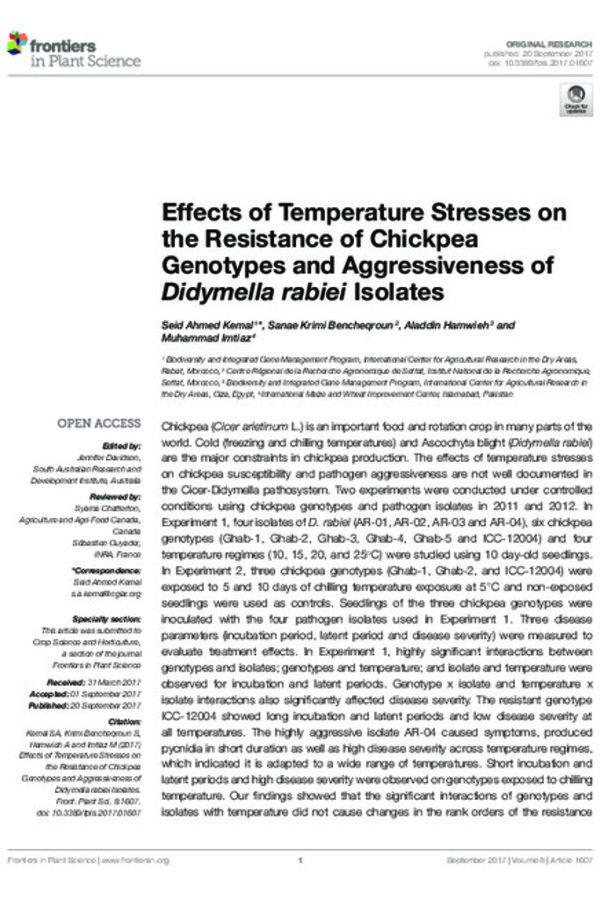
Effects of Temperature Stresses on the Resistance of Chickpea Genotypes and Aggressiveness of Didymella rabiei Isolates
September 20, 2017
Journal Article

Genetic Diversity of Fusarium oxysporum f.sp. lentis Population Affecting Lentil in Syria
May 01, 2017
Journal Article
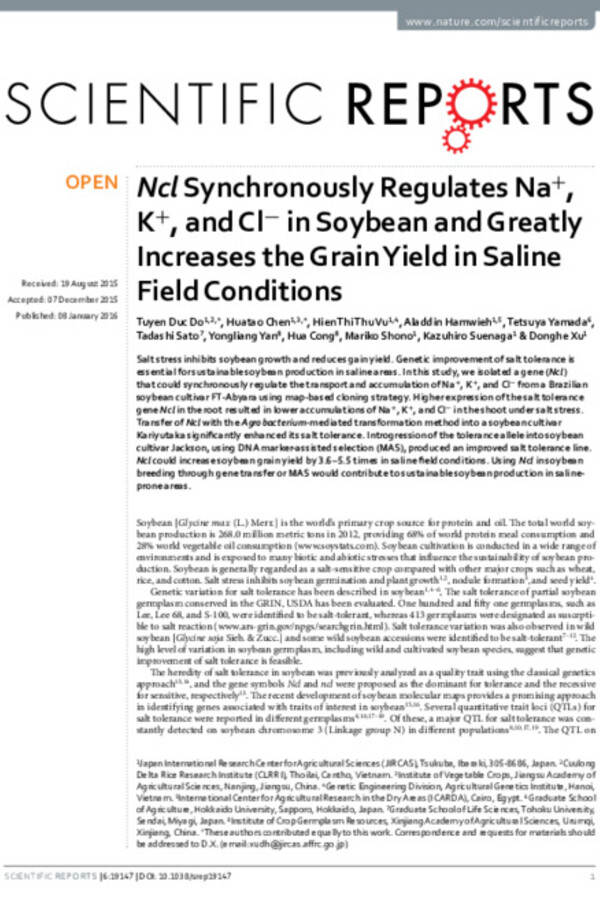
Ncl Synchronously Regulates Na+, K+, and Cl− in Soybean and Greatly Increases the Grain Yield in Saline Field Conditions
January 08, 2016
Journal Article
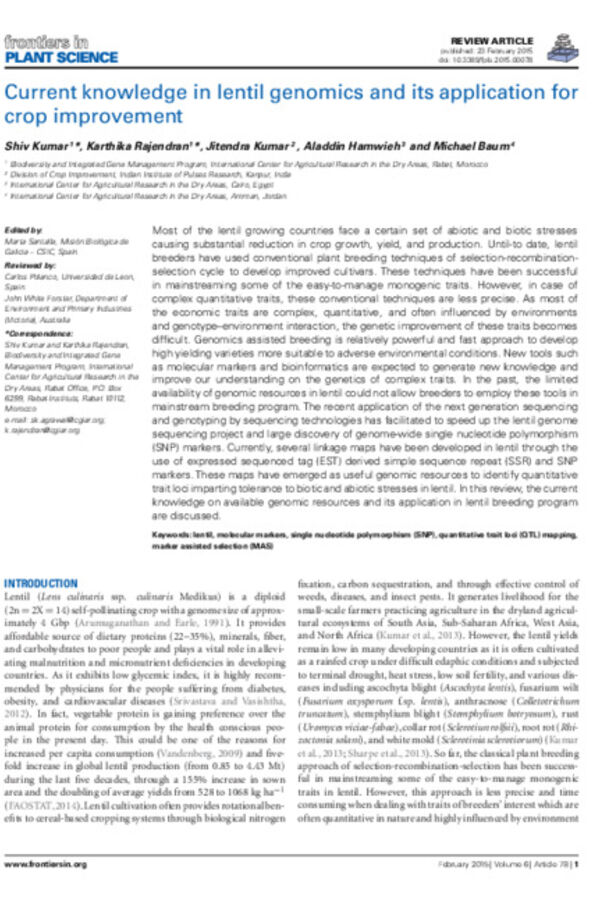
Current knowledge in lentil genomics and its application for crop improvement
February 23, 2015
Journal Article

Genetic diversity among summer and winter Beauveria bassiana populations as revealed by AFLP analysis
September 30, 2013
Journal Article

Pathogenic and genetic diversity of Didymella rabiei affecting chickpea in Syria
April 30, 2013
Journal Article

Multi-environment QTL analyses for drought-related traits in a recombinant inbred population of chickpea (Cicer arientinum L.)
January 01, 2013
Journal Article
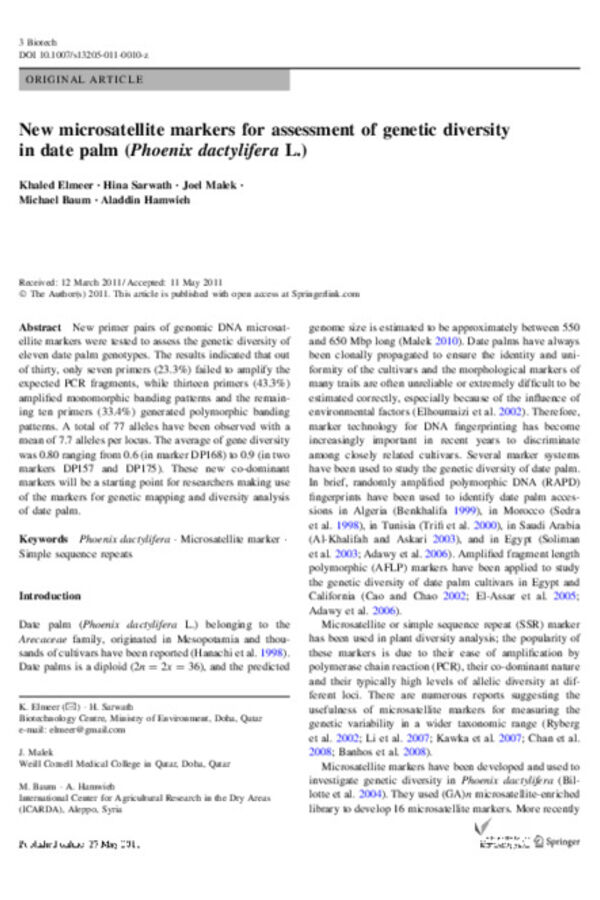
New microsatellite markers for assessment of genetic diversity in date palm (Phoenix dactylifera L.)
September 27, 2011
Journal Article
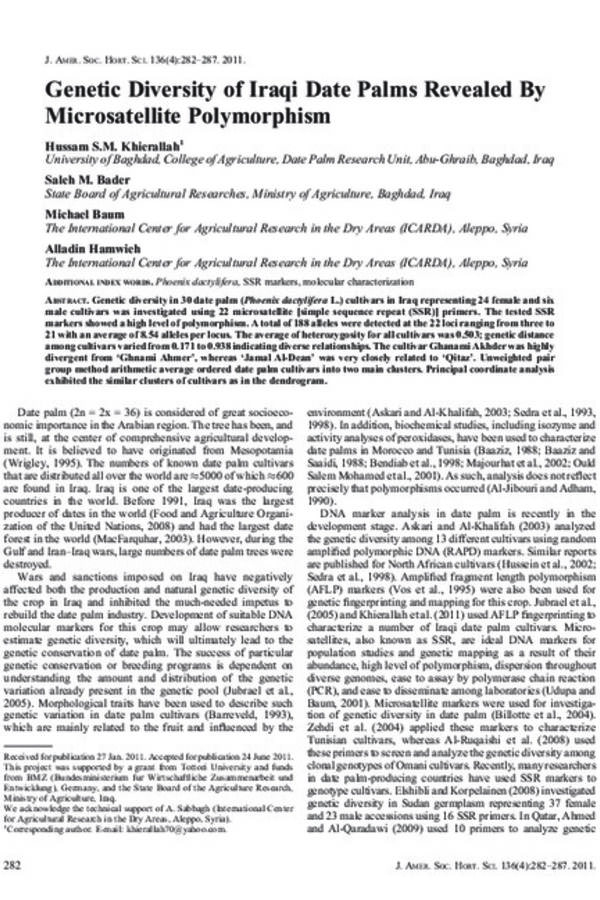
Genetic Diversity of Iraqi Date Palms Revealed By Microsatellite Polymorphism
July 29, 2011
Journal Article

Chickpea Ascochyta Blight: Disease Status and Pathogen Mating Type Distribution in Syria
June 30, 2011
Journal Article
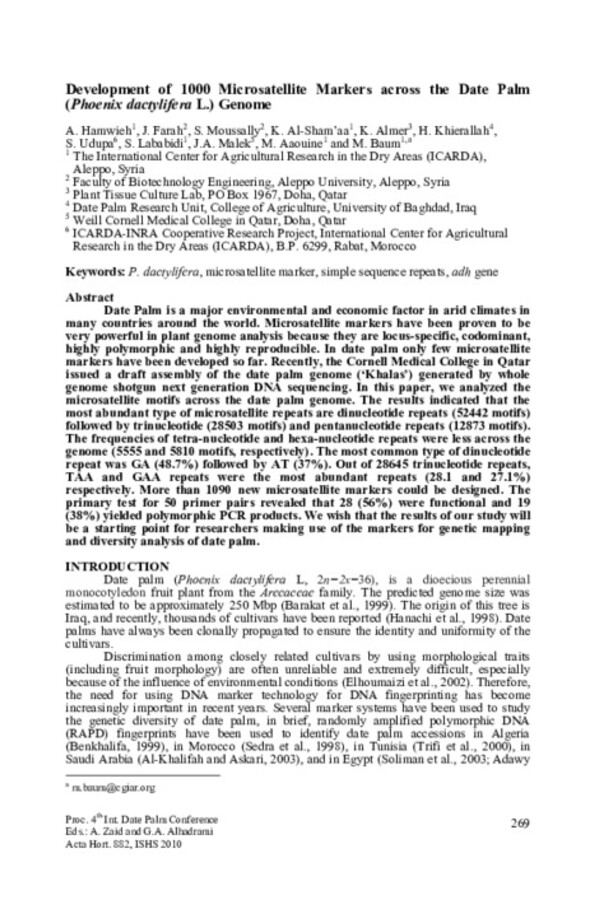
Development of 1000 Microsatellite Markers across the Date Palm (Phoenix dactylifera L.) Genome
November 26, 2010
Journal Article
/

